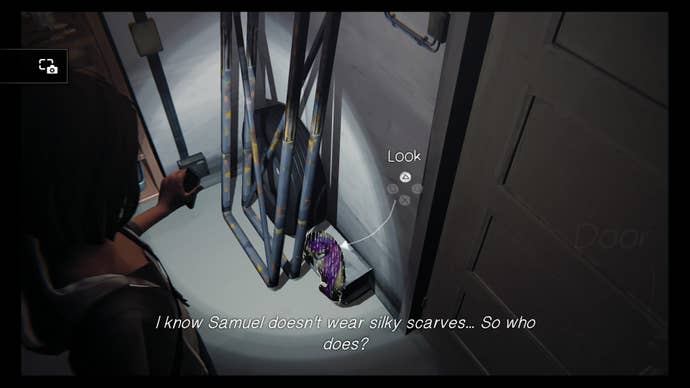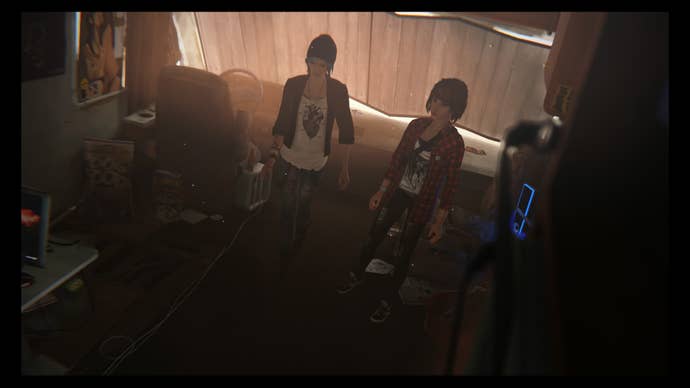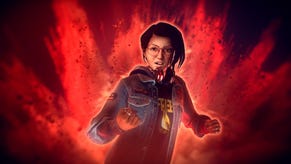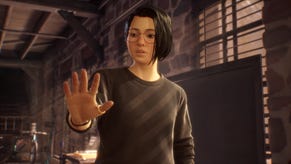Life is Strange, Episode 3 PS4 Review: There's No Best Place
Max's adventure takes a big turn in its latest episode.
This article first appeared on USgamer, a partner publication of VG247. Some content, such as this article, has been migrated to VG247 for posterity after USgamer's closure - but it has not been edited or further vetted by the VG247 team.
This is a review of episode 3 of a 5-episode series. Spoilers everywhere.
There's an old manga called Shaman King. In it, one of the primary cast, Umemiya Ryunosuke, is forever looking for the "Best Place", the perfect spot to just hang out with his friends and be himself. I always felt that was a subtle metaphor for Ryu looking for self-acceptance for his gay leanings in show, being a stereotypically masculine yankee gang member, but that's not the point here. The point is he was always looking for his "Best Place" and even when the manga finally called it quits, he never found it. It continued to elude him.

That's pretty true of adulthood. I find I'm always looking for the best comment or phrase, the best article, the best tweet to release out into the world. I'm always trying to put my best foot forward, a never-ending quest for perfection that I know will never be fulfilled deep down. When you're a kid, you honestly think that there is a "best", a perfect option where no one suffers and everything works out for everyone. The best job, the best place to live, the best stuff. Adulthood is finding out there's a give-and-take. I write about games, but I also want to write about comics, TV, and anime, but I rarely have the time between work (and working out) to make that happen. I want to draw more, same deal. You're always losing something to gain something else, and life simply becomes a matter of priorities.
That internal conflict forms the core of the third episode of Life is Strange. The thrust of Dontnod's episodic adventure is Max learning to establish herself and what she really wants away from her parents. Arcadia Bay was once a familiar home, but her previous move to Seattle means that she's returning to a town that looks little like what she remembers. Blackwell Academy is her chance to strike out and becomes who she's supposed to be, but she doesn't fit in and she can't even turn in a single photo for her school's contest.
Max is looking for the right way forward, a situation that mirrors the player controlling her. Even with the ability to rewind time and second guess your decisions, you never really get a feel for which decision is the right one. It feels like the outcomes of Max's decisions could go either way.

Episode 3 also builds on the black-and-white world Max has crafted around her. We all have to make assumptions, mental shortcuts, simply to deal with everything that comes our way. Max is no different.
In this episode, the supporting cast begins to show more nuance, more facets of their character. Blackwell's principal doesn't just hate Max and support troubled rich kid Nathan Prescott; he's a man who drinks in his office occasionally and is caught in the wake of the powerful Prescott family that owns the town. Frank Bowers is the violent town drug dealer, but he's also a dropout student who was legitimately in love with the missing Rachel Amber. There are hints that Samuel, the kindly janitor, may not be what he seems. Max's second antagonist, Victoria is still a horrible person, but she's also a talented young photographer working through her crush on her photography teacher.
Most importantly, Max's powers aren't as limited as she believes. She thinks she can only rewind time in sections measured by minutes. After a fight with her best friend Chloe (in my version), Max is looking at a photo of their younger selves, wondering where everything all went wrong. To Max and Chloe, the defining change in Chloe's life was when her father died. His death sent her on a spiral from which she has yet to recover. In her emotional turmoil, Max connects with something bigger than herself and jumps back to the day Chloe's father died. In her younger self, she convinces Chloe's father not to drive that day, preventing his fatal accident.

Upon returning to her own time, Max sees the true scope of what she can do. As she travels back to her time, photos of her original reality fade out, replaced by a new reality where Chloe's father is alive and healthy. The episode itself ends on a heart-wrenching moment though; Chloe's father is alive, but Chloe herself is completely paralyzed.
The part that's hardest to handle is that paralyzed Chloe looks happy. She doesn't remember the previous reality, so she's had some indeterminate time to become used to her status quo. She smiles when she sees Max. That understated joy is a stark contrast to the Chloe we've gotten to know in previous episodes.
What's the best place? A reality where Chloe is healthy, but miserable and lost, with a family fraying at the seams? Or the reality where she's bound to a wheelchair, but is happy and in a loving home? I'd go with the latter myself, but for some that's a matter of perspective and priority. I'm not even sure how Max is going to deal with this new status quo. Will she jump back and let Chloe's father die? Is that even going to be an option? I'm not sure. Max can't even hand in a single photo for her school's "Everyday Heroes" contest, because she's looking for the perfect picture. How can she begin to choose the best reality?

This was the episode where Life is Strange got better for me. Things made more sense, the characters were a bit deeper than they were before. Max's focus on photography and her wall of photos makes sense when you realize she can jump back to any point in her life using them. We've achieved a sense of narrative symmetry. Max's newly expanded powers tie everything together and potentially expand the scope of the game.
Life is Strange episode 3 is better when things are more confusing for Max and the player, when we don't know what's the right way forward. The truth is, many of us love fiction because it makes life simple. All the choices in stories lead to something, there's closure, there's the right choice, and the wrong choice. In the real world, many choice may not lead anywhere. You and I are limited by resources - time, effort, money, location, physical status - but in many games, you've given limitless power. There's a clear bad guy to fight or a clear path forward. That's a safe and comforting thought, but it bears little resemblance to reality.
Life is Strange is now a better reflection of our reality, despite it's more fantastical elements. I'm looking forward to seeing how Max and I deal with her new reality.
InterfaceThe interface really does feel like a teenager's sketchbook.
Lasting AppealThe rewind mechanic means you'll experience most of the episode in one playthrough. Not much more to see beyond that.
SoundThe game's score is composed by Syd Matters' Jonathan Morali, with music from some alternative acts.
VisualsLife is Strange looks pretty good, but the lip-syncing is awful. There's also the occasional detail that looks off, like blurry textures.
ConclusionLife is Strange takes a hard turn with Episode 3 as Max's supporting cast gains a bit more nuance and depth. So far, each episode of Life is Strange has improved upon the foundation laid by the last one. With Episode 3, the developer makes the player really think about the scope of Max's powers and actions. Great stuff.









